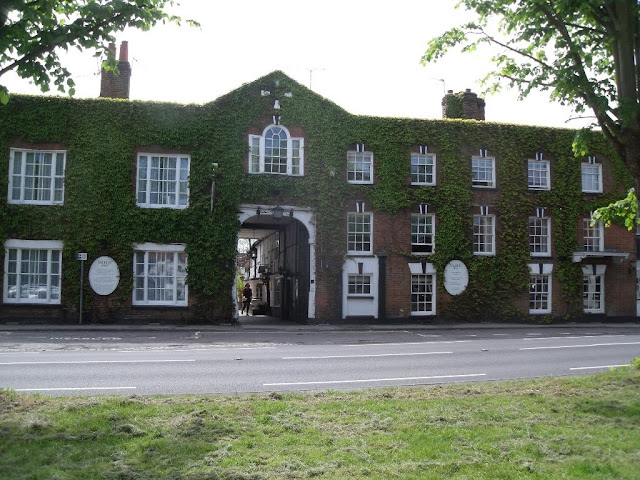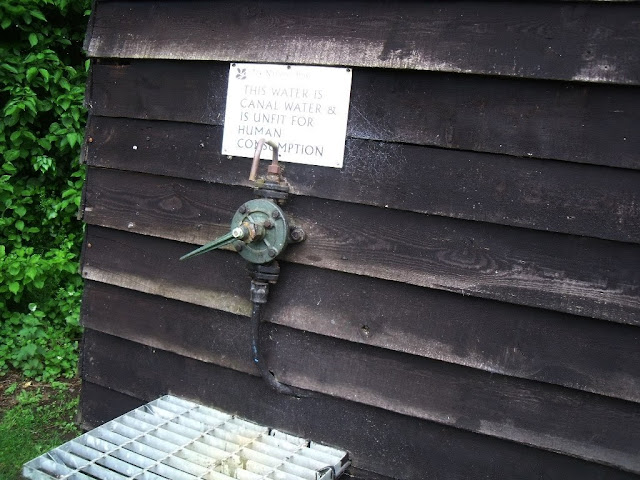The front yard of this house opens onto the Thames so all the mail slots are on the towpath side of the houses. Jaq is surprised to find a U.S. Post box mounted on a front gate. Perhaps an American is in residence here.
This is the path from the Thames, across the fields to the Magna Carta Memorial at Runnymede.
This is a lovely memorial on the lower part of Cooper's Hill is built in the Classical style to commemorate the sealing of the Magna Carta on June 15, 1215 by King John requiring the King to proclaim certain liberties and accept that his will was not arbitrary. For example it was explicit in stating that no "freeman" (in the sense of non-serf) could be punished except through the law of the land, a right that still exists. the beginning of English Law and hence American law took root here on the fields of Runnymede. Copies were sent out to all the Barons and Bishops in England. Four copies now survive--two of which can be seen in the British Library. It is thought to have been sealed somewhere here on the surrounding meadows.
Under the beautiful blue dome with gold stars are the words, "Erected by the American Bar Association." It was built with donations from over 9000 U.S. attorneys.
The words inscribed in granite speak for themselves.
This is the gateway to the John F. Kennedy memorial, dedicated May 1965 by Queen Elizabeth II and Jacqueline Kennedy. The memorial consists of a garden and a carved tablet of Portland stone with part of JFK's most famous speech. The area of the memorial was given as a gift to the people of the United States by the people of Britain. When one steps through this gate, one is on American soil.
Jaq says this is one of the most tranquil, touching and inspiring places she's ever visited. It is humble while inspiring great awe.
This memorial was carved from a 14 ton block of Roach bedstone weighing 7 tons. Shells trapped within the stone suggest it is at least 7 million years old. This stone rests on a granite cushion representing the shoulders of the multitude. It was designed by Sir Jeffrey A. Jellicoe.


.jpg)



.jpg)







































































